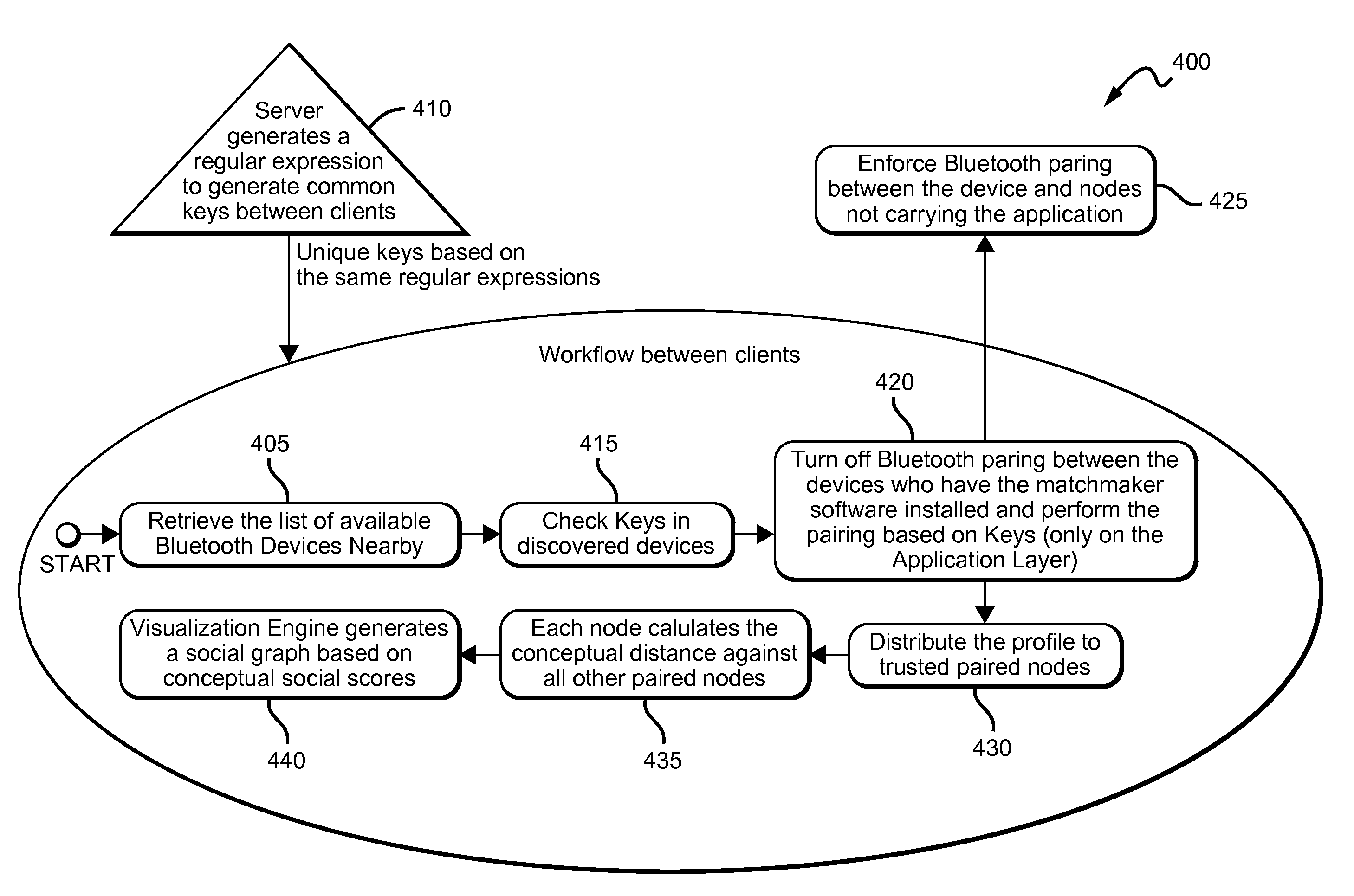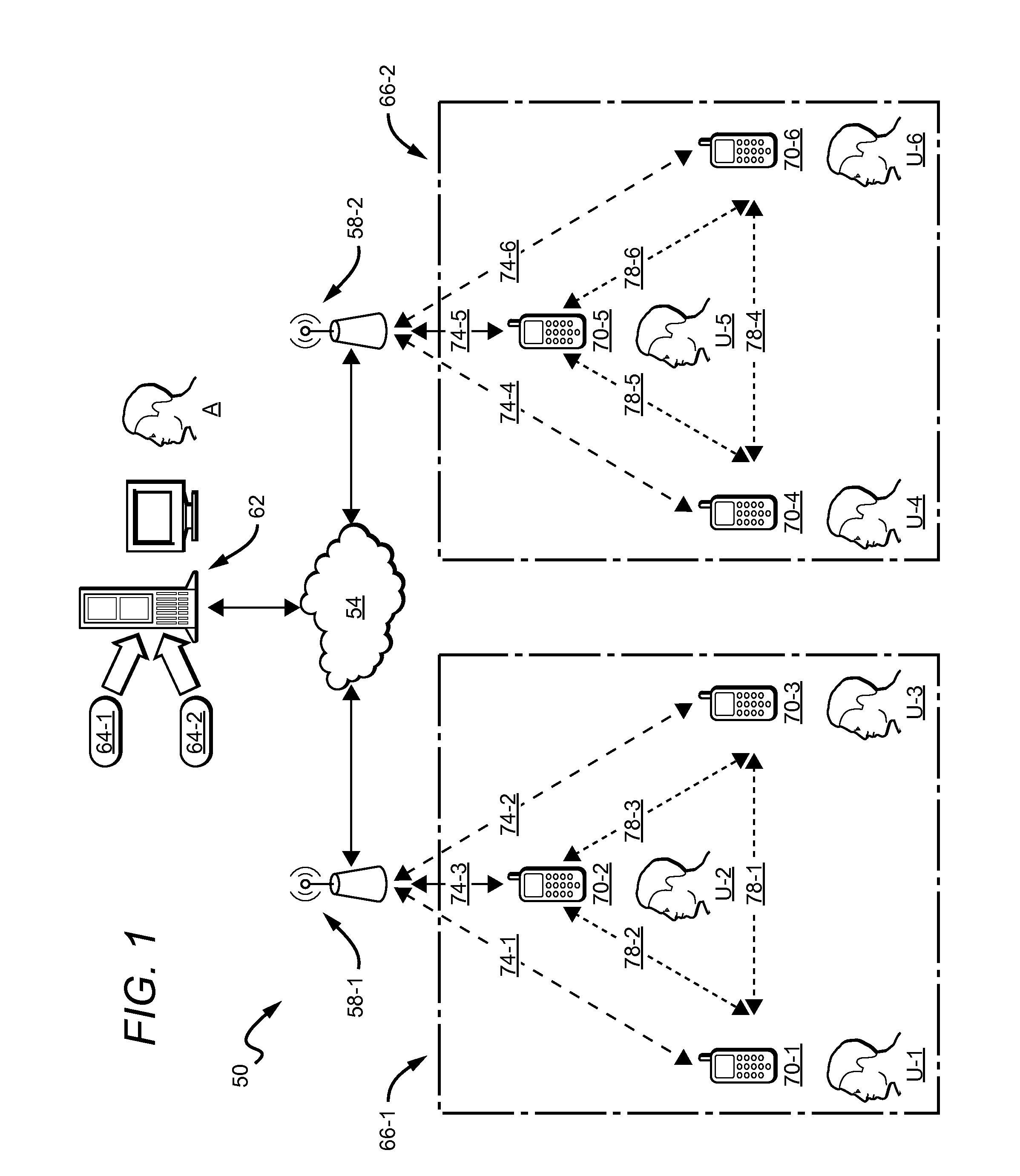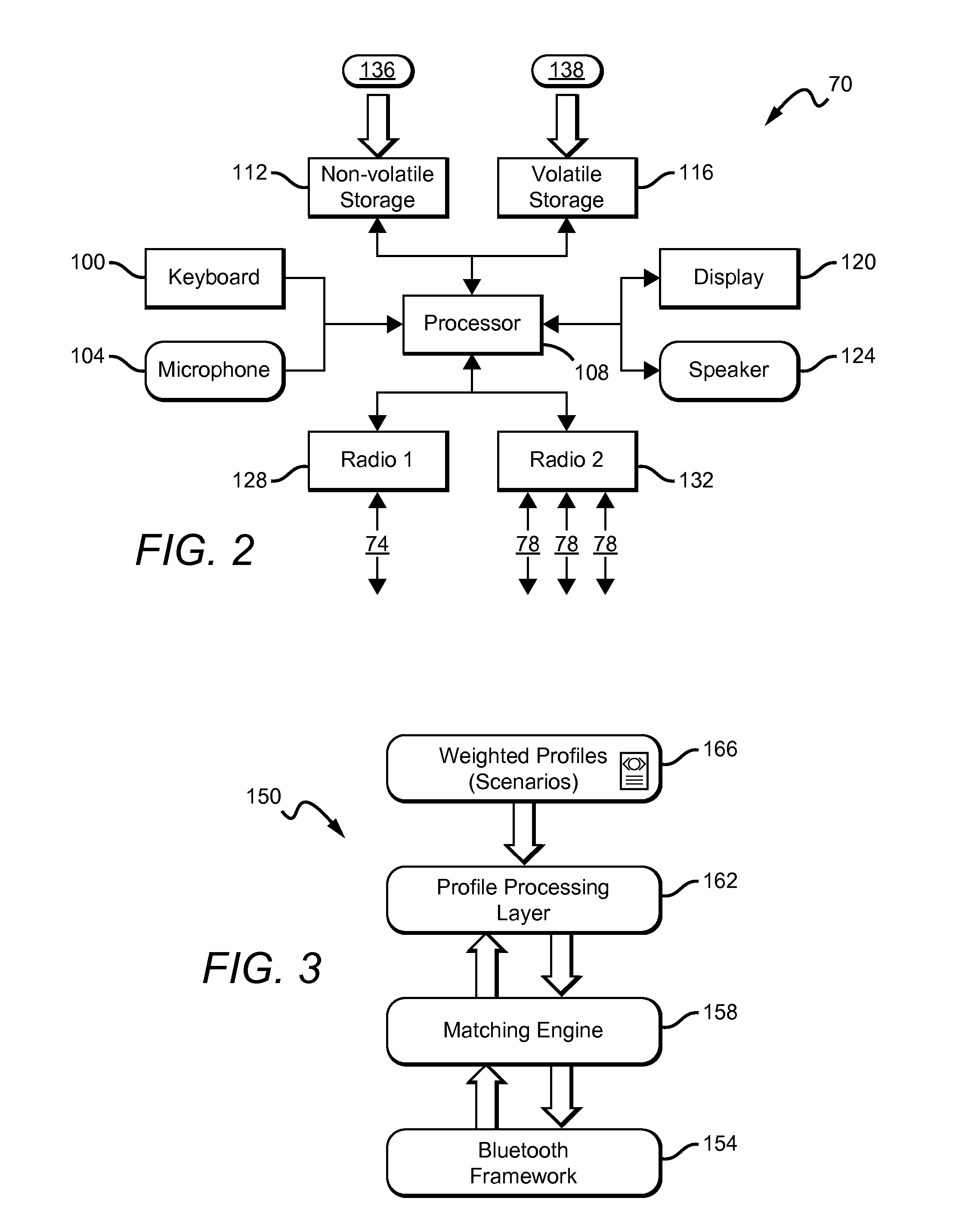Method, Apparatus and System for Social Networking
a social networking and apparatus technology, applied in the field of telecommunications, can solve the problems of not being able to meaningfully address the prioritization of matches, the inability of the system to deal with more complex contexts and its scalability, and the inability to address the volatile and low power characteristics that are necessary, so as to facilitate additional communication to the end-user, improve the representation of semantics in ad hoc networks, and reduce the reliance of users
- Summary
- Abstract
- Description
- Claims
- Application Information
AI Technical Summary
Benefits of technology
Problems solved by technology
Method used
Image
Examples
Embodiment Construction
[0029]Referring now to FIG. 1, a system for social network is indicated generally at 50. System 50 comprises a network 54 at its core that interconnects a plurality of base stations 58-1, 58-2 and an administrative server 62. (Base stations 58-1, 58-2 are collectively referred to as base stations 58, and generically as base station 58. This nomenclature is used elsewhere herein.) Each base station 58 has a respective service area 66, and each service area 66 includes a plurality of mobile devices 70, each device operated by a respective user U. Each mobile device 70 can connect to its respective base station 58 via a respective first wireless link 74. Each mobile device 70 an also connect on a peer-to-peer basis with each other mobile device 70 via a second wireless link 78.
[0030]As will be explained further below, each service area 66 can represent any area where a plurality of users U with devices 70 may wish to socially network. Thus, within service area 66-1, it is contemplated ...
PUM
 Login to View More
Login to View More Abstract
Description
Claims
Application Information
 Login to View More
Login to View More - R&D
- Intellectual Property
- Life Sciences
- Materials
- Tech Scout
- Unparalleled Data Quality
- Higher Quality Content
- 60% Fewer Hallucinations
Browse by: Latest US Patents, China's latest patents, Technical Efficacy Thesaurus, Application Domain, Technology Topic, Popular Technical Reports.
© 2025 PatSnap. All rights reserved.Legal|Privacy policy|Modern Slavery Act Transparency Statement|Sitemap|About US| Contact US: help@patsnap.com



